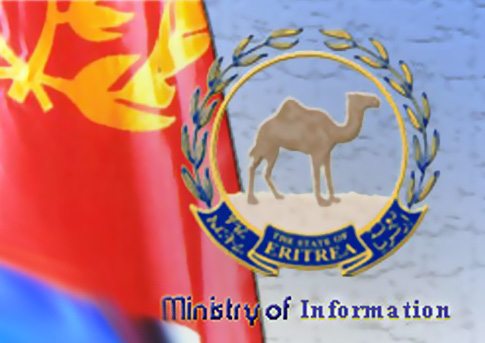Over the last few weeks, Somali officials and AMISOM officers have repeatedly warned that the Somali National Army and AMISOM have been about to launch “Operation Indian Ocean” to liberate the remaining major towns and large areas still held by Al-Shabaab. The offensive was loudly signposted with a number of announcements and forces moving steadily towards major Al-Shabaab bases steadily over several weeks with no attempt at concealment. The aim, in part, appears to have been to encourage Al-Shabaab to leave its strongholds. Last week, the offensive started and has shown some immediately positive results.
Somali National Army and AMISOM forces moved north from Jowhar into Hiiraan region and on Wednesday (September 3) Somali troops supported by Burundi units of AMISOM liberated the town of Jalalaqsi in Hiiraan region as part of operations aimed at liberating more towns from the militants group. Jalalaqsi is an important trading and farming town located along the banks of Shebelle River and the road connecting the towns of Jowhar and Bulo Burdo, It is the second biggest town in Hiiraan region. The joint forces advanced from Jowhar captured a number of small towns on the way including the important a crossroads at Dangaras. Al-Shabaab fled in advance of the arrival of the SNA and AMISOM forces. AMISOM Sector 5 commander Colonel Ndayambaje Reverien said the strategic town of Jalalaqsi had been used by Al-Shabaab as a base to launch attacks on SNA and AMISOM bases. “We are happy to help the Somali Government regain more territory and help the people who have been suffering under the brutal leadership of al Shabaab, who have held the population hostage,” he said. Colonel Reverien added that “the local populations welcomed the joint forces during the operation and continue to work with the forces in a bid to liberate them from the terrorists.” 
The Acting African Union Special Representative for Somalia Honorable Lydia Wanyotto said the capture of Jalalaqsi town is a welcome victory for Somali security forces and AMISOM because of its strategic location. She said it would help alleviate the suffering of the Somali population opening up the route between Mogadishu and Belet Weyne and allow more free movement for business people and the population.”
Another aspect of “Operation Indian Ocean” is aiming to cut Al-Shabaab supply lines through the port of Barawe and other smaller ports along the coast south of Mogadishu. SNA and AMISOM forces have been moving through Lower Shebelle towards Barawe, a major Al-Shabaab center. On Saturday (August 30) Somali National Army forces and Ugandan units of AMISOM liberated the town of Bulo Marer in Lower Shabelle region, capturing the two smaller towns of Golweyn and Jerlio as they advanced. Bulo Marer, held by Al-Shabaab for several years is seen as the gateway to Barawe. It was used as an Al-Shabaab recruitment center and tax collection point. Al-Shabaab made a considerable but unsuccessful effort to resist the advance. Bulo Marer‘s capture was a necessary step in the operations to liberate Barawe. Another significant town captured in this area is the town of Kurtunwaray. On Thursday the United States Representative for Somalia, James P. McAnulty, the European Union Ambassador, Michele Cervone d’Urso, and the British Ambassador to Somalia, Neil Wigan, in a joint statement congratulated the Government and AMSIOM on these latest security advances. A statement said the liberation of the key towns of Jalalaqsi, Bulo Marer, and Kurtunwaray, had delivered significant blows Al-Shabaab, denying it critical recruitment and staging grounds for future attacks.
On Monday (September 1), the US Department of Defense announced that US military forces had conducted an operation in Somalia against the Al-Shabaab network; Rear Admiral John Kirby, the Pentagon press secretary, said “We are assessing the results of the operation and will provide additional information as and when appropriate.” However, according to Abdikadir Mohamed Nur Sidii, the Governor of Lower Shabelle region, the operation was an airstrike against top Al-Shabaab commanders who had been meeting in a forest near Sablale district, 170 kms south of Mogadishu, and not far from Barawe. The meeting had been to discuss ways to respond to the offensive aimed at Barawe. The Governor claimed that commanders at the meeting included both Ahmed Abdi Godane, the Amir of Al-Shabaab, and his deputy Abu Abdalla. The Pentagon has yet to confirm the aim or the results of the attack, but an Al-Shabaab commander was quoted on Tuesday as saying that two vehicles were hit by the airstrike and six militants had been killed. He refused to give any names. In 2012, the U.S. offered a reward of up to $7 million for information leading to the arrest of Ahmed Abdi Godane, “Abu Zubeyr”. A Somali government spokesperson, Ridwaan Hajji Abdiweli, who said the current offensive was aimed at rooting out terror groups from Somalia, noted that “the airstrikes in the Lower Shabelle Region were targeted at the Al-Shabaab leadership and it has had debilitating effects on the group and this will be sustained.” The Government welcomed the US airstrike that targeted leaders of Al-Shabaab on Monday.
Operation Indian Ocean has not been confined to Hiiraan and Lower Shebelle. Elsewhere, SNA and AMISOM troops have been making advances Bakool region, and on September 2 there were reports that AMISOM and SNA forces had been moving out of El Buur and Dhusamareb towns in central Somalia to clear villages around these areas. The Chief of the Somali Army, General Dahir Adan Elmi, said the forces will continue to liberate areas from Al-Shabaab as the Somali Government asserts control in the newly liberated areas. He said that already over the last few weeks, Somali army units assisted by AMISOM had successfully liberated various towns in Hiiraan, Bakool, Lower Shabelle and Middle Shabelle regions. “The momentum will continue”, he said, “until the terrorism threat is dealt with.”
On Tuesday, Somalia’s Council of Ministers convened in an extraordinary session chaired by Prime Minister Abdiweli Sheikh Ahmed to discuss the security situation and the ongoing security operations. It agreed that the Government would continue to enhance the ongoing offensive and called on people to support the national forces. It also called on Somali religious scholars to play their role in this important initiative and “to debunk the fallacies and misinterpretation of Islam.” The Government has also offered a 45-day amnesty to those misled into joining terror groups, but anyone who does not take up this will then be regarded as a criminal and face the law. Those who take up the offer will have the opportunity of a new start in life and opportunities to better their future.
The objective of the offensive is not just military gain. Southern Somalia is experiencing severe drought with hundreds of thousands in urgent need of humanitarian assistance. The UN Humanitarian Coordinator for Somalia, Philippe Lazzarini said in a statement on Tuesday (September 2) that he was “deeply concerned by the serious deterioration in the food security situation in Somalia.” He said a new assessment by the Food Security and Nutrition Analysis Unit and the Famine Early Warning Systems Network showed a significant decline “owing to a lethal mix of drought, surging food prices and conflict.” The findings indicate that an estimated 1,025,000 people face acute food insecurity today and are classified as Crisis and Emergency (IPC Phases 3 and 4). Mr. Lazzarini said this was up by 20 per cent from the 857,000 six months ago, and he added the food security situation of over 2.1 million additional people remains fragile and is classified as Stressed (IPC Phase 2), bringing the “total number of people in need of humanitarian assistance or livelihood support to over 3 million.” As a result of delayed and erratic rainfall, the Gu 2014 cereal harvest in July/August is estimated to be 37 percent below the long-¬‐term average and 28 percent below the five year average. The situation is likely to continue deteriorating further until the start of the Deyr rains in October. The poor rains have also contributed to water shortages, poor livestock performance and reduced access to milk in several pastoral areas, particularly in parts of the Northeast and the Gedo region.
Mr. Lazzarini said the country’s fragile gains, made since the 2011 famine that cost over a quarter of a million lives, were now being eroded and malnutrition rates were again on the rise. “Coping capacities are severely stretched and vulnerable families risk being pushed further into destitution. As many as 218,000 acutely malnourished children under the age of 5 require emergency nutrition supplement, access to clean water, and better hygiene; 43,800 children are so severely malnourished that they will die if they do not receive medical treatment and therapeutic food.” Aid organizations have begun to use air cargo flights to areas with no road access, but this is insufficient to deliver the volume of aid required. Mr. Lazzarini said the securing of road access for commercial and humanitarian supplies was necessary for sustained delivery of needed assistance. He said concerted efforts were urgently required to save lives and prevent a free fall, adding that “as we enter the last third of the year, more than half a billion US dollars are still required for life-saving activities.” Decisive measures, he said, are required.
*********
Source: Ethiopian Ministry of Foreign Affairs’ weekly bulletin, Sept. 05, 2014.





